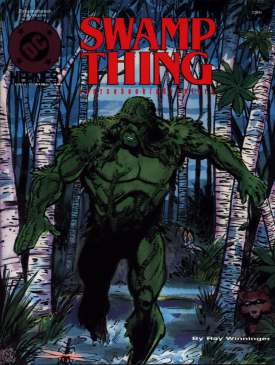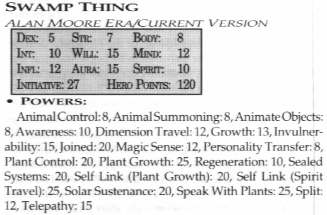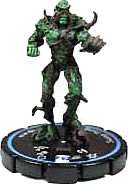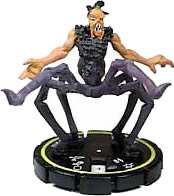
My brush with role playing games was brief, and several years ago…during my junior high school days in the early 80s. Dungeons & Dragons was the game of choice among my friends in the neighborhood, at least until one of the busybody neighbors whipped out a tape from a radio show with testimonials from RPG “victims.” The one example I remember from this show was someone claiming that his copy of the Dark Tower game would talk to him from his closet at night, which should tell you the level of prevailing discourse in this program. Anyway, my friends, God love ’em, were a little on the “gullible” side of the scale and fully bought into this bullshwa, and thus ended our role playing escapades.
Even though I never really played role playing games after that (beyond the occasional computer game, but that’s hardly the same), I still maintained an interest in gaming, but mostly on a technical level – game design, gameplay balance, et al. It wasn’t an obsession or anything, but I’d enjoy reading instruction manuals for games, interviews with game designers, and so on, much more than actually playing the games themselves. Yeah, that may be a little weird, but there you go.
As a result of this particular interest in gaming, I would occasionally buy gaming books and supplements that tie in to other things I enjoy. For example, I have the GURPS Callahan’s Crosstime Saloon supplement, based on the books by Spider Robinson, and somewhere around here I have the DC Heroes Role Playing Game supplements based on Alan Moore and Dave Gibbon’s Watchmen.
Another DC Heroes supplement I own, and the one I plan on discussing here, is (it should come as no surprise) the Swamp Thing Sourcebook/Adventure published by Mayfair Games in 1991. The book comes in two parts…the main 32-page booklet details the characters and places prevalent in the Swamp Thing comics, both from the Len Wein/Berni(e) Wrightson era and from the later Alan Moore era. It opens (after reprinting, uncredited, Alan Moore’s “this is the place” passage used to advertise Swamp Thing during his run) with a fairly detailed summary of events beginning with the very first issue in 1972, and running all the way up to the aborted end of Rick Veitch’s tenure.
The first actual gaming information you see in the book are for Swamp Thing, of course, with a chart of numbered stats that may have meant something to me at one point, but don’t mean a lot now, beyond “higher is better.” The first character detailed is Swamp Thing’s human…”alter ego” isn’t exactly right, but you know what I mean. In addition to the stats, there are notes on the character’s Skills (Alec’s is Gadgetry and Scientist), Advantages (Alec has low connections to the U.S. Secret Service, but high connections to the Scientific Community), Drawbacks (being Married is a drawback, apparently…it sounds funny, but in superhero/adventure stories, I suppose that would make sense), and Motivation (“Upholding the Good”).

You also get stats for Swamp Thing as he first appeared in the 1970s, and a second set of stats for Moore’s Earth Elemental Swamp Thing (shown to the right). Listed under Equipment for the Moore version is “Psychogenic Tubers,” which gets its own sidebar description. A whole section of the book is devoted to Swamp Thing’s mindset, with section headings such as “Why Doesn’t Swamp Thing Chase Supercriminals?” (because he’s more concerned with the condition of humanity and the world as a whole, rather than individual wrongdoers). Additional stats and role-play information are provided for several other characters, including Alec’s wife Linda Holland (so you can role-play, um, the whole half-issue she appears in, I guess), John Constantine, and, of course, the various permutations of arch-nemesis Arcane.
The main book wraps up with a map of Houma, Louisiana, along with a brief description of the climate and special events (apparently the Blessing of the Shrimp Fleet occurs in April, so adjust your Swamp Thing role playing game accordingly).
So, after reading up on Swamp Thing, and all his powers, abilities, and “equipment,” you should be ready for a little adventuring. Luckily, this package includes a second 32-page booklet, featuring a solo adventure. Solo adventures are a little unusual in the role-playing field, as most RPGs require at minimum two people to play: one to actually run the game as the “game master” (or the more familiar “dungeon master”), and one (ideally, more) to run characters through the game. A solo RPG has more in common with the old Choose Your Own Adventure books, and this Swamp Thing adventure is no exception: it’s divided up into 134 numbered sections, and as you read through the adventure, each section ends with a series of choices which direct you to another numbered section…and so on and so on until you reach one of the endings. For example:
If you want to look around the office to get your bearings, go to Passage 52. If you want to have Miss Tremayne call the repair people to look at the copier, go to Passage 27. If you want to try and fix the copier yourself, go to Passage 33. If you want to go see Mr. Green, go to Passage 8. If you want to play your answering machine message, go to Passage 71.
The “role playing” aspect in this sort of solitaire game is generally reduced to having some decisions made for you by your stats and random dice rolls:
Make an Action Check using your WILL/WILL as the AV/EV against an OV/RV of 12/12. If you succeed, go to Passage 54. If you fail, go to Passage 121.
Oh, and in case you were wondering what all that business was about copiers and answering machines in that preceding example…yes, that’s actually out of the Swamp Thing adventure. You know all that cool stuff you learned about Swamp Thing’s abilities in the first 32-page booklet? Well, forget it, because you don’t use any of that stuff in the adventure, which has you trapped in the delusion that you are once again in the human form of Alec Holland. You go to work, you wander around town, you work out an advertising budget(!)…I mean, don’t get me wrong, it’s fine as an adventure, but I think the game may have been better served with an example adventure that demonstrates just how to use the Swamp Thing’s abilities in a role playing game.
I should also mention that the book features several black and white illustrations, mostly taken from Rick Veitch and Alfredo Alcala’s work on the comics, though some Steve Bissette/John Totleben work is present as well (most notably a sequence with Swampy facing off against a werewolf from Swamp Thing #40).
I was going to wrap up my look at Swamp Thing gaming with a discussion of the Heroclix figures, but I really don’t know a whole lot about the game beyond that some of the figures are pretty neat:


Heroclix images borrowed from this well-done site.
I just got ’em on top of my desk, staring back at me even as I write this.







